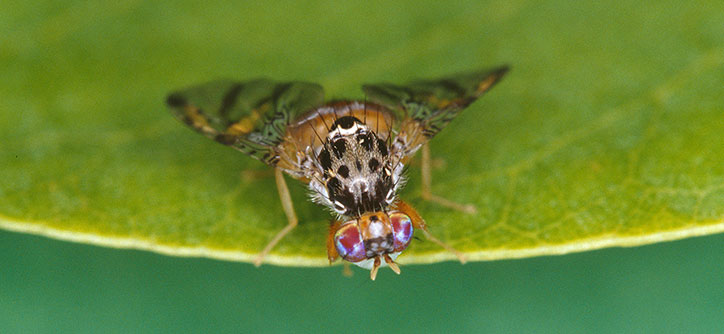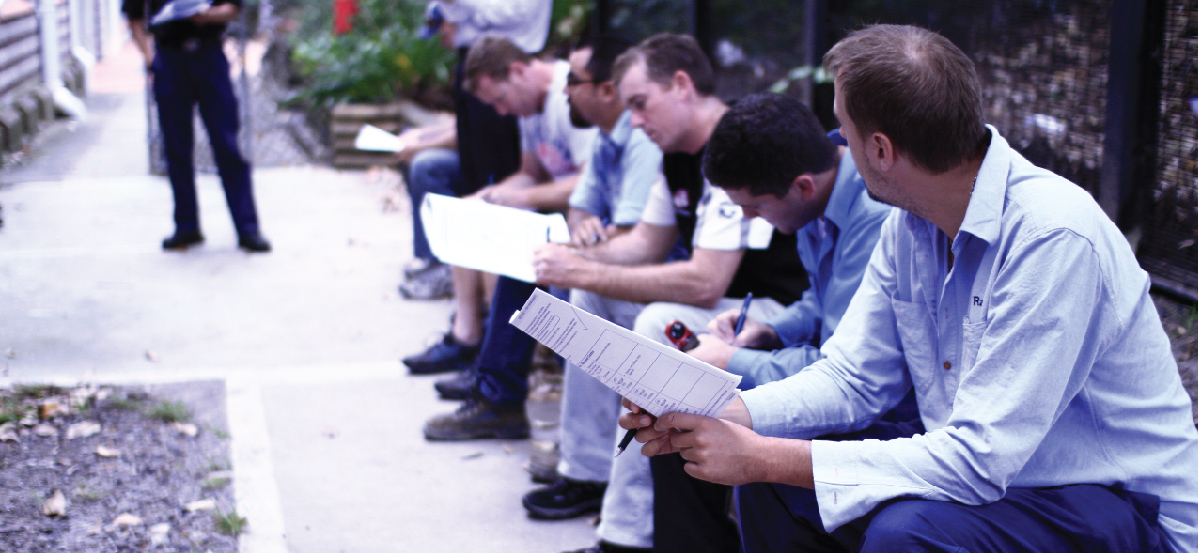 Fruit fly costs the nation roughly $300 million a year in control and lost markets, with over 75% of Australian fruit and vegetable exports susceptible.
Fruit fly costs the nation roughly $300 million a year in control and lost markets, with over 75% of Australian fruit and vegetable exports susceptible.
As the main chemical control methods of fruit fly (dimethoate and fenthion) are being phased out, a long term solution to controlling these pests is vital ( read more ).
A lot of pome (apple, pears etc.) and stone fruit, as well as tomatoes and capsicums are commonly attacked by fruit flies, the main one in the eastern states being the native Queensland fruit fly (Q fly) and in WA the introduced Mediterranean fruit fly (Med fly).
With a declining arsenal of chemical controls, growers need to look at a more integrated approach to address the issue, involving:
1.Monitoring
Monitoring is an essential part of a commercial fruit fly management program, as it avoids any unnecessary spray applications.
Sticky traps are essential in the detection and partial elimination of many species of flying pests, especially in greenhouses.By regularly counting the captured insects on the sticky traps, you can analyse insect presence, its growth in population, and when it’s likely to cause economic damage.
– Trap and Lure (Lure and kill): fruit Fly Traps are used for monitoring male populations of Qfly. The trap contains a wick soaked with a sex attractant (cue lure) and maldison. Male fruit flies are killed upon entering the trap from up to 500 m away. Use with a Fruit Fly Lure (an attractive protein/insecticide mix spot sprayed onto the likes of citrus, avocados and passion fruit ) to control the female flies which cause the fruit damage.
– Ceratrap : the Cera Trap mass trapping contains a protein based liquid solution that is attractive to both sexes of Q and Medfly. Once the lid is removed from the bottle, the smell of the liquid lures the fruit flies into the specially designed trap where they drown in the liquid.
2.Insecticidal Cover Sprays
Often used as an insurance against fruit fly damage near harvest, but they can cause secondary pest flare-ups as well as impacting bee populations. Check out permit 12590 for Spinetoram use on pip/stone fruit as a softer option on beneficials.
3.Hygiene
According to DAFWA, Medflies require a suitable host fruit in which to lay eggs for the larvae to develop. Without a suitable host fruit, the adult fruit fly cannot lay eggs and the breeding cycle is broken.
By destroying infested fruits, further development of eggs and larvae is prevented, reducing the number of fruit to protect with other measures, thereby lowering control costs.As a guide:
- Remove and destroy decaying fruit left on the tree or ground (mulching/burial etc.)
- Remove non-commercial trees, especially that provide an insect overwintering bridge
- Eliminate weed hosts as many insects overwinter in weeds
- Avoid excessive nitrogen use
4.Area Wide Management (SIT)
Sterile insect technique (SIT) is a method of biological control, where large numbers of sterile insects are released to compete with fertile insects to mate, which effectively reduces the overall population. It is an environmentally kind and cost-effective control option according to Dr Olivia Reynolds of NSW DPI and SITPlus.
Integrated control of fruit flies requires a mix of monitoring (traps and lures), excellent crop hygiene and host weed control, mass trap killing, baiting sprays and periodically a cover spray that is as soft as possible on beneficial’s. As with all IPM protocols, best results are achieved when practiced in tandem with an area wide program such as the SIT program.



